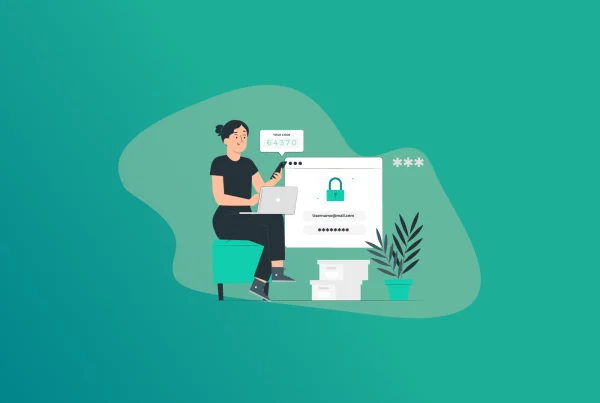
What is IoT? Have you heard of IoT security? Are there any challenges or vulnerabilities? This guide highlights all there is to know. Here we explain the various ways to strengthen the security of your internet and all connecting devices.
The technical area, or rather term, that is dedicated to protecting linked devices and networks in the Internet of Things is known as IoT security. It allows you to create internet connectivity to a network of all sorts of connecting computers, digital and mechanical machinery. This is what we call the Internet of Things (IoT).
Everything now has unique access for transferring data across networks. However, if these devices do not hold the proper security measures, they can be exposed to significant dangers while connecting to the internet.
What is IoT Security?
IoT security is what is required to secure or protect each Internet of Things device and its internet connections, preventing any future vulnerabilities and cyberattacks. Because IoT devices can serve as access points for hackers to penetrate a larger network, it’s a crucial component of cybersecurity. To guarantee user privacy, data confidentiality, and the seamless operation of the IoT environment, effective security measures are required.
Is IoT Security Really Important?
The expanding use of IoT technology and the vulnerability of IoT devices make IoT security extremely important to incorporate. It’s a fact that there are many IoT devices that are not encrypted and simply lack even basic encryption standards. This then opens up a huge gateway for cyberattacks, hackers, and other intrusions. When these attacks take place, the compromised device can easily give the perpetrator complete access to the entire network and its connecting devices. IoT devices are not always generally designed with safety features in place. This automatically means that these devices are not able to have security software or patch management, even after the devices are built.
Various Challenges and Issues in IoT Security
Given that there are numerous devices and networks that are able to connect to each other, there are equally as many ways for hackers or cyberattackers to compromise them. The two main components that are required by IoT devices, the Hypertext Transfer Protocol and APIs, are the very same channels that hackers can break into. It could be anything, house appliances, bluetooth devices, and more. With that said, below are a few of the issues or challenges faced where Internet of Things security matters:
Vulnerable Passwords
The majority of users may not be aware that weak passwords on IoT devices need to be changed to stronger ones. IoT devices may become susceptible to brute-force and other various kinds of attacks if the standard passwords are not changed. This is why using the best and most secure password managers matters. FastestPass helps users create and store extremely unique and impenetrable passwords.
Poor Encryption Standards
Since the majority of network traffic coming from IoT devices is not encrypted, the chances of security risks and data breaches are at an all-time high. However, with effective measures, these risks can be prevented by making sure every device is encrypted and secure.
Too Many Connected Devices
Nowadays, the majority of homes have several linked devices or electronics. This convenience has a disadvantage in that all connected devices in the same household go down if one device malfunctions because of a security setting error.
Lack of Resources
Not every IoT device has the processing capacity to incorporate required software like an antivirus or a firewall. Some gadgets can hardly connect to one another. For instance, a recent wave of data breaches has affected IoT devices that include Bluetooth technology. Once more, one of the markets most severely impacted is the automotive sector.
Remote Access Flaws
Because IoT devices are run by connections via the internet, their attack radar is far larger than that of conventional technologies. Although this accessibility is inherently beneficial, hackers can also use it to control machines remotely. This explains why phishing and other hacking efforts work so well. To safeguard assets, IoT security, and cloud security, you must take into consideration a lot of entry points.
Lack of Industry Knowledge
More IoT devices have been used by sectors like healthcare and automotive as companies explore the latest digital transformation in an effort to increase efficiency. However, the likelihood of data breaches has grown due to this greater reliance on susceptible technologies. Many businesses in these industries were exposed to significant risks because they undervalued the importance of effective cybersecurity.
Various Kinds of IoT Security Threats
There are quite a few kinds of threats that hamper the overall Internet of Things security patterns. A few of these include:
Unauthorized Access
In order to take control of IoT devices and alter systems or steal data, hackers can take advantage of weak or typical passwords.
Data Interception
Sensitive data, such as personal identification or medical records, may be exposed if data sent between IoT devices and servers is not encrypted.
Malware and Ransomware
IoT devices can be infected by malicious software, which can then lock users out until a ransom is paid or transform them into a component of a botnet (like Mirai).
Denial of Service (DoS) Attacks
Attackers have the ability to overload networks or IoT devices with traffic, disrupting services and leaving equipment completely unusable.
Firmware Vulnerabilities
Security holes in outdated or insecure firmware are frequently exploited by hackers to obtain enduring access.
Privacy Invasion
Privacy can be violated by snooping on users using microphones, smart cameras, and sensors.
What Measures Should be Implemented to Strengthen IoT Security?
Before beginning, always run a risk assessment over all devices and connections linked to each other. Once that’s out of the way, here are a few measures you can take to enhance IoT security:
Running Regular Patch Updates and Leakholes
You can better defend your workplace from constantly changing cyber threats by keeping the firmware on your IoT devices up to date. People may neglect to update their IoT devices even though they frequently update their phones and PCs.
Using Extremely Strong Passwords
A password manager is what you need for your company. It helps contribute to the security of your IoT data. FastestPass password manager generates complicated, one-of-a-kind passwords. It also stores all your passcodes, ensuring they’re never lost or compromised. Plus, our app frequently reminds you to change passwords that are weak, outdated, or frequently used.
Multi-factor Authentication
Your company’s assets are safer if the devices you use at work or remotely have more layers of protection, including authentication factors. Your IoT devices are less susceptible to cyberattacks if you include extra authentication factors, including the user’s geolocation or biometric information. This is one of the simplest and safest ways to strengthen IoT security.
Check Your Device Behavioral Patterns
You can identify abnormal behavior and take action if you observe any abnormalities in your device’s performance by being aware of its baseline behavior and features, such as its performance or typical network activity.
Monitor Irregular Network Activities
There needs to be certain technologies or mechanisms at work that help keep track of all network activities and linked devices. Monitoring this data helps add extra layers of protection and identify any anomalies in internet traffic. This implies that a breach that affects one of your devices won’t spread to the others.
Check for App Permissions Over All Devices
You should never leave your devices open to connecting to any internet networks and other connections, specifically apps that are outdated or not in use. Scan through the apps on your devices and ensure only necessary permissions and restrictions are imposed.
Make Use of Other Security Tools & Software
If you’re considering only securing the apps you have on your devices, a VPN is the most vital security software to have, other than the Password Manager. With the best VPN, you can add extra layers of encryption to your devices, data, and the Internet connection you’re linked to.
Which Sectors Require IoT Security?
Multiple industries now depend heavily on connected devices and manage sensitive information, making heavy IoT security essential. The most affected sectors include:
- Healthcare – Devices such as insulin pumps, pacemakers, and remote health monitors must be secured to avoid potentially fatal cyberattacks and safeguard patient information.
- Banking & Finance – Protection is necessary for IoT solutions like mobile banking, ATMs, and smart branches in order to protect financial information and stop fraud.
- Automotive – Connected cars depend on the Internet of Things for safety, diagnostics, and navigation; they are vulnerable to cyberattacks that could claim lives.
- Smart Homes & Cities – Security is necessary for IoT devices in households and urban infrastructure (such as surveillance and traffic systems) to avoid privacy violations and threats to public safety.
- Manufacturing – IoT sensors and automation systems used in smart factories have the potential to interfere with operations or expose confidential data if they are compromised.
- Energy & Utilities – Smart meters, pipeline, and grid management all depend on IoT. Supply chain problems or outages may result from a breach.
- Retail – Security is necessary for connected payment tools, sensors, and smart inventory systems to safeguard consumer information and stop system manipulation.
Frequently Asked Questions
The three major kinds of IoT security include device security, network security, and data security. Each is interconnected to the other. Yes, there are several examples of Internet of Things attacks, including casino thermostat system vulnerabilities, the Mirai Botnet attack, data breaches targeting big-league companies, and more. Right now, the best IoT security tools include FastestPass, Palo Alto Networks, Armis, FastestVPN, Microsoft Azure, and others. Yes, a strong IoT password manager is one of the best security solutions. With FastestPass, you get a unique password generator and the ability to store all kinds of sensitive data, including passwords, ID card numbers, social security numbers, company files, and more, in a security vault.
To Conclude – How to Enhance IoT Security with FastestPass
As mentioned, the rise in cyberattacks targeting agencies with weak IoT security is high. This also happens to remote users.
Every sector nowadays has maximum devices and networks connected to each other. If issues arise with one device, it could affect the rest. This is why IoT cybersecurity is of dire importance.
But how does FastestPass surpass high-security standards for companies with IoT devices? When agencies or companies handle large amounts of data over many devices, sensitive data is bound to leak or get compromised. This is where FastestPass comes in.
With FastestPass, you’re able to store large amounts of sensitive data, files, passwords, social security numbers, and more, all in an air-tight security vault. This way, no one, not even we, can access these data files except you. Plus, with FastestPass, you can use the password generator to create intricate and strong passwords for all your IoT devices.
Generate passkeys, store them in vaults, and safeguard sensitive data! Receive the latest updates, trending posts, new package deals,and more from FastestPass via our email newsletter.
By subscribing to FastestPass, you agree to receive the latest cybersecurity news, tips, product updates, and admin resources. You also agree to FastestPass' Privacy Policy.
Secure and Create Stronger Passwords Now!
Subscribe to Our Newsletter










